|

|
|
|
|
about us |
|
|
see the beast |
|
|
our photo album |
|
|
explore tucson |
|
|
links |
|
|
email us |
|
|
sign our guest book |
|
|
home |
|
www.davidandcarol.com |
|
Our Magnificent Journey |
|
Chapter 14 |
|
2013 |
|
Argentina, Brazil and Peru |

|
|||||
|
Click HERE to see our photos |
Slept well in our comfy bed. Woke at 6 am, took quick showers and dressed for today’s trip to sacred Machu Picchu. |
Grabbed a quick but tasty breakfast at the hotel, checked out and stowed our bags in storage at the hotel, then walked down the hill to the bus stop and grabbed the 8 am shuttle to Machu Picchu. |
The day is a bit overcast and cool but the sun peeks through every once in a while. The twenty-minute bus ride through the jungle followed the rapids of the Urubamba River for a while before climbing the several miles of rough switchback roads up, up, up until finally we arrived at the entrance to the citadel of Machu Picchu. |
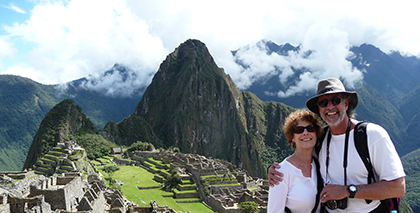 |
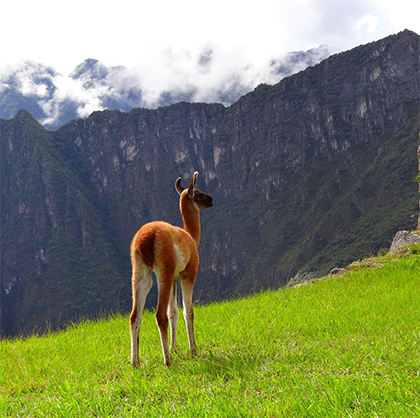 |
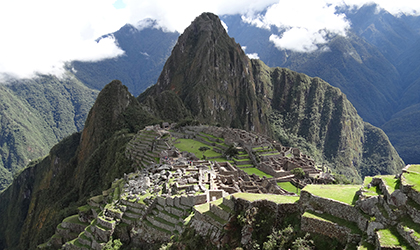 |
Machu Picchu is a 15th-century Inca site located 7,970 ft above sea level. It is situated on a mountain ridge above the Urubamba Valley, which is 50 miles northwest of Cusco and through which the Urubamba River flows. Most archaeologists believe that Machu Picchu was built as an estate for the Inca emperor Pachacuti (1438–1472). Often referred to as the "Lost City of the Incas", it is perhaps the most familiar icon of Inca civilization. |
 |
 |
The Incas built the estate around 1450, but abandoned it as an official site for the Inca rulers a century later at the time of the Spanish Conquest. Although known locally, it was unknown to the outside world before being brought to international attention in 1911 by the American historian Hiram Bingham. Since then, Machu Picchu has become an important tourist attraction. Most of the outlying buildings have been reconstructed in order to give tourists a better idea of what the structures originally looked like. By 1976, thirty percent of Machu Picchu had been restored. The restoration work continues to this day. |
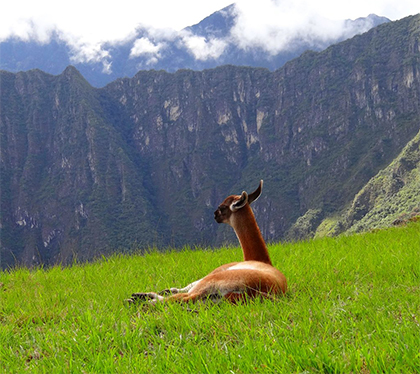 |
 |
Since the site was not known to the Spanish during their conquest, it is highly significant as a relatively intact cultural site. Machu Picchu was declared a Peruvian Historical Sanctuary in 1981 and a UNESCO World Heritage Site in 1983. In 2007, Machu Picchu was voted one of the New Seven Wonders of the World in a worldwide Internet poll. |
 |
Machu Picchu was built in the classical Inca style, with polished dry-stone walls. Its three primary structures are the Intihuatana (Hitching post of the Sun), the Temple of the Sun, and the Room of the Three Windows. These are located in what is known by archaeologists as the Sacred District of Machu Picchu. |
Machu Picchu is vulnerable to threats from a variety of sources. While natural phenomena like earthquakes and weather systems can play havoc with access, the site also suffers from the pressures of too many tourists. In addition, preservation of the area's cultural and archaeological heritage is an ongoing concern. Most notably, the removal of cultural artifacts by the Bingham expeditions in the early 20th century gave rise to a long-term dispute between the government of Peru and the custodian of the artifacts, Yale University. |
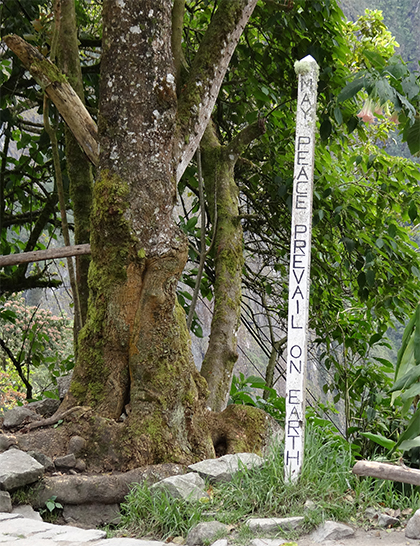 |
The weather gods smiled on us as we hiked up and down the stone walkways of the ancient and sacred Incan city, snapping photos every few steps over the next 3 hours. This is truly a magical place and one can see why the Incas chose this spot. |
Exhausted at 11:30 am, with the rain just starting to fall, we found our way back to the citadel entrance and boarded a bus back down the steep switchbacks until we saw the Urubamba River and arrived back at the village of Aguas Caliente. |
Hopped off the bus and window-shopped through the large indoor market again. The weather gods waited until we had finished our tour of sacred Machu Picchu and then the skies became dark and a veritable deluge began. |
We ducked into El Indio Feliz Restaurant to avoid the rain and to enjoy a delicious lunch of tomato soup, local trout with garlic sauce, chocolate mousse and Inca Kola. The owner, a Frenchman from Provence, told us that the Peruvian restaurants cater to the tourists with “fusion” food and he told us that it really is “confusion” food and that the only truly authentic Peruvian food can be found in the homes of the Peruvian people. |
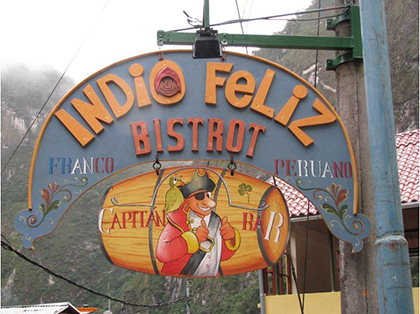 |
 |
 |
After our leisurely and tasty lunch, we strolled through the huge indoor market one last time, then wandered up to our hotel where we rested and compared travel notes with other guests. |
At 3:30 pm we walked slowly with our bags through a light cool mist to the bustling PeruRail train station where we caught the 5:30 pm train towards Cusco. |
The train followed the Urubamba River for two hours to Pachar where we all disembarked and boarded buses for the last leg back to Cusco, a 1 ¾ hour drive. We are in the rainy season and often the train has delays, so to avoid this, PeruRail simply buses everyone back to Cusco from Pachar. It’s not easy to get to or from Machu Picchu but it certainly is worth the effort. |
A driver from our second Cusco hotel, Hotel Torre Dorada, was waiting for us at the Cusco bus depot and after a five-minute drive we were at the front desk checking in. |
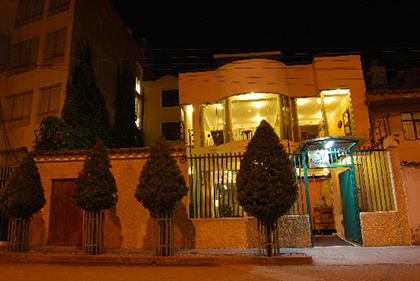 |
In spite of a loud party that was going on upstairs, we were fast asleep by 11 pm after two days in the Sacred Valley of the Incas. Pachamama has certainly been kind to us. |
| Previous Day |
copyright 1998 / david
and carol lehrman / all rights reserved |
email david@davidandcarol.com |